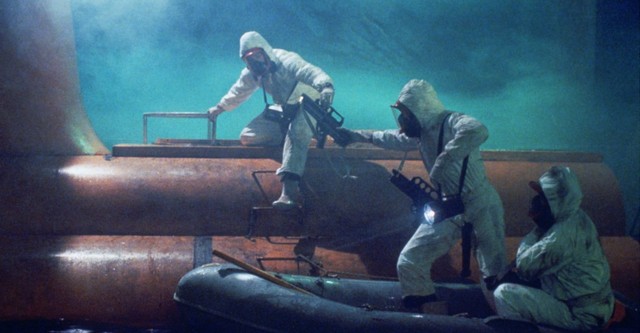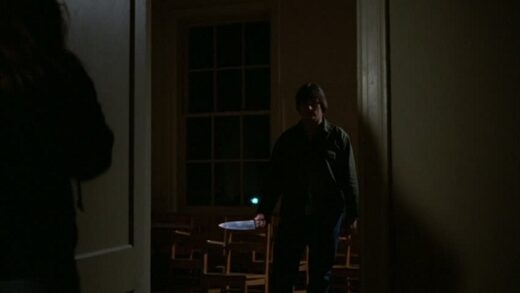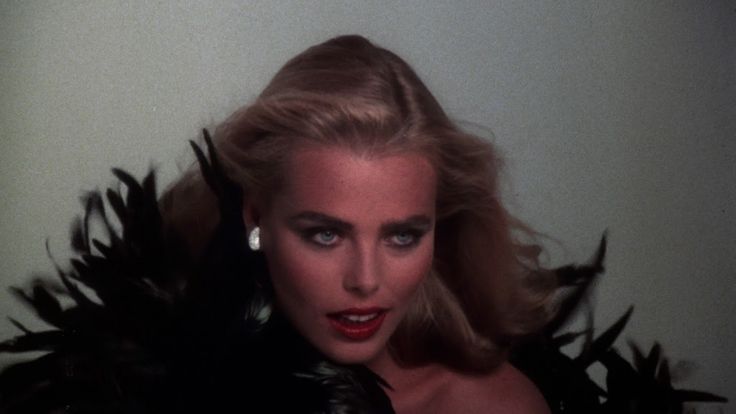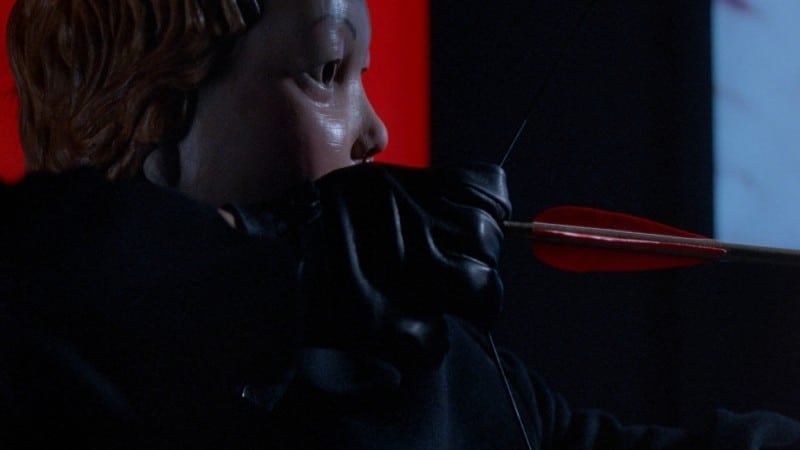The Rift (1990)
![]()
The Rift (1990) Directed by Juan Piquer Simon
Juan Piquer Simon’s first attempt at full-blown American popcorn was not entirely auspicious for the career of the Valencian filmmaker – renowned in the United States, esoteric in his native country. Only four years later he would make what was his penultimate film and then in the twilight of the 20th century what would be his last film. Afterwards, all that followed for the Spanish director were multiple frustrations due to underfinanced projects and a melancholy for not having produced enough film adaptations of Jules Verne’s literature -one of his biggest inspirations. He finally passed away in 2011, leaving a precious legacy in the realm of Hispanic and Anglo-Saxon B movies, and his underrated reputation continues to be deservedly re-evaluated in various circles of cinephilia enthralled by genre cinema.
Juan Piquer Simon was a genre film literate – superior to any other of his European contemporaries I would dare to assert -, unlike other titans of European genre cinema, he made his films with an Americanized idiom; the Europeanisms of directors like Jess Franco, Narciso Ibáñez Serrador, Bigas Luna, Pedro Almodovar and many others were typical of an artistic flair rooted in European art film culture. Juan Piquer Simon was not interested in crafting sophisticated art, much less dabbling in the baroque style of European genre cinema, he aspired to craft American genre cinema. This became evident when his first commercial feature film was released in 1976 with resounding success in Spanish theaters – in the 60’s, the first and less known period of the director, Juan Piquer Simon was directing anti-Francoist documentaries – this commercially successful film was Journey to the Center of the Earth (in the U.S. called Where Time Began). A fantasy adventure motion picture based on Jules Verne’s celebrated novel, it was trashed by the most selective critics and adored by the younger generation in a country just emancipating from the torment of a lengthy dictatorship. Juan Piquer Simon aimed to entertain his audience, to thrill and to offer a brainless B-entertainment that the whole family could relish.
He understood how Americans generated so much revenue with such mediocre and cheap films. His profound mastery of American genre filmmaking gave him marketable skills that he would gradually implement in the rest of his films. By disrupting the pattern of European cinema and devoting himself exclusively to the Americanisms of Anglo-Saxon cinema, Juan Piquer Simon’s films would become a sensation in the theaters of the biggest American metropolises. In particular his gory horror flicks, which were part of the Grindhouse phenomenon on 42nd Street in New York City. The irony of his filmography is that his films could practically pass as American even though they are not. The commercial gimmick used by many of the European directors was to hire Anglo-Saxon actors in order to have a wider appeal to English speaking audiences, but even with films like Lucio Fulci’s The New York Ripper starring Jack Hedley or Dario Argento’s Tenebrae starring John Saxon there is something inherently European in their cinematic language that you can easily differentiate them from the American exploitation films. With Juan Piquer Simon’s horror films, it is extremely difficult to notice that contrast, you take them as American. This is because the vernacular of Piquer Simon’s moviemaking is American in form and content. After having filmed Slugs (1988) -the first film by Juan Piquer Simon shot entirely in American soil- the Valencian director ventured to make a Blockbuster rip-off of mainstream pop flicks.
The Rift released in 1990 is an ostensibly pulp movie, but it has the same grandiloquence as any other big budget production. Let’s say it’s Alien meets The Abyss filmed like a rollicking, immersive Star Trek episode. The trends in American popcorn cinema at the time were aquatic adventures. Some horror, some more melodramatic. The same production team that made Slugs in 1988 spotted an opportunity to capitalize on the popularity of the aquatic genre. Watching The Rift reveals the fact that Juan Piquer Simon wanted to try his hand at this pompous mainstream style. After all, his studious grasp of the genre makes him uniquely suited to helm a film of such conventional nature. As in his slasher/giallo magnum opus Pieces, Juan Piquer Simon features a mimicry of other films, but it is precisely this faithful adherence to those schemes that ultimately makes The Rift a phenomenally entertaining piece of filmmaking.
TV superstar Jack Scalia plays Wick Hayes, the designer of the submarine Siren 1, who is recruited by NATO to go in search of the Siren 1, which is lost in the depths of the ocean. With a team commanded by the stern and inflexible Captain Randall Phillips (R. Lee Ermey), a sort of travesty of his character in Kubrick’s Full Metal Jacket, they embark into the dark, uncharted depths of the ocean to discover what went wrong with the Siren 1 submarine. Down there they encounter a whole gamut of difficulties, the worst of them all: genetically modified sea creatures that devour and infect everything they encounter!
It is Alien under the ocean, instead of a spaceship the characters are in a submarine. But this popular cliche is not a flaw in Juan Piquer Simon’s film, it is a virtue. The Rift filmmakers’ unceremonious take on Ridley Scott’s masterpiece is very cogent in its cinematic pragmatism. The plot doesn’t rely on its mimetic canvas, nor does it rely on its copycat narrative, it relies on its B charm. Which is uniformly pure in delivering fluid, fast-paced entertainment; there’s no fat to cut, everything is lean in Juan Piquer Simon’s aquatic chiller. Packed with hilarious, exquisitely practical special effects, The Rift succeeds because of its exploitation movie tropes. But the great thing is that this is an exploitation movie operating in the popcorn domain. Crazy, right? Therein lies Juan Piquer Simon’s wizardry in making the conventional, idiosyncratic. The suspenseful dynamic of the film is goofy, the gore is chaotic and the dramatic conflicts – as well as the absurd and superfluous romance – create a scenario too implausible to be fully satisfying. However, there is something entrancing in its textures that ends up seducing the most incredulous of viewers, myself included.
It’s probably the artful handling of environmental claustrophobia that makes The Rift such a tense ride, or it’s perhaps just that Juan Piquer Simon’s helming is too infectious and exhilarating. I’m really not sure what’s so appealing about this extraordinarily ordinary film. Maybe it’s that oxymoron the singular rationale for its entertainment. The Rift navigates the depths of the ocean by bumping into grotesque, oddball creatures while following strictly procedures of genre filmmaking, it doesn’t try to fool you, it tries to be just that. And with that mindset, Juan Piquer Simon wins our hearts.







JP would have loved your review. He was indeed a genre student & true cinematic genius. So glad he is finally getting the critical attention he deserves. Writing this film for him was a dream come true for me as a novice screenwriter.
Oh, thank you very much! It means a lot to me coming from someone who knew him and worked with him. Lovely written movie, the kind of movie that could only exist in that era. I’m also a big fan of Cthulhu Mansion!